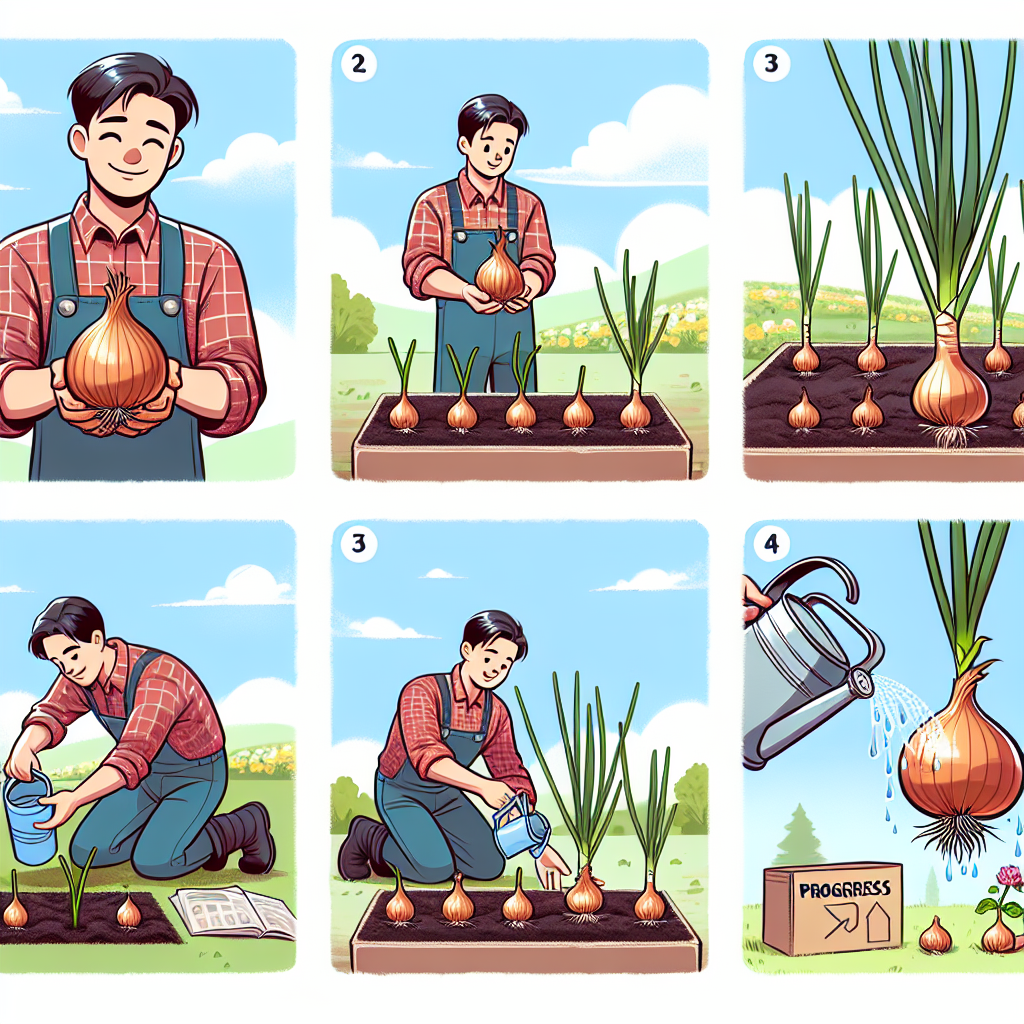
How to grow onions from onions
How to Grow Onions from Onions: The Ultimate Guide
Growing your own onions can be a rewarding and cost-effective endeavor. While many gardeners may be accustomed to starting onions from seeds or sets, it’s also possible to grow onions from onions. This method is not only simple but can also produce abundant yields. In this guide, we will explore everything you need to know about this fascinating gardening technique.
Understanding the Basics of Onion Growth
Before we delve into the steps on how to grow onions from onions, it's important to understand a bit about onion biology. Onions (Allium cepa) are biennial plants, meaning they typically take two years to complete their life cycle. However, in most growing conditions, they are treated as annuals. In the first year, they store energy in their bulbs and, if left to overwinter, they produce flowers and seeds in the second year.
Choosing the Right Onions
When considering how to grow onions from onions, selecting the right type of onion is crucial. Here are some factors to keep in mind:
- Variety: There are numerous onion varieties available, including yellow, red, and white onions. Each has unique growing preferences, so choose a variety that suits your climate.
- Size: Use medium to large onions for propagation. Smaller onions may not develop strong roots and can be less productive.
- Quality: Opt for firm, healthy onions without any blemishes or signs of rot.
Preparing the Onions
Once you have selected your onions, it's time to prepare them for planting. Here’s how:
- Trim the Tops: Cut the tops of the onions to about 1 inch from the bulb. This prevents excessive moisture loss and promotes healthy growth.
- Soak in Water: Soaking the cut onions in water for a few hours can help jumpstart the rooting process. Ensure that the roots are submerged but not the entire bulb.
- Add Fertilizer: Lightly dust the base of the onions with a balanced fertilizer to provide nutrients as they grow.
Planting the Onions
Now that your onions are prepared, you can start the planting process. Here’s a step-by-step guide:
1. Prepare the Soil
Onions thrive in well-draining, fertile soil with a pH level between 6.0 and 7.0. Prepare your garden bed by following these steps:
- Remove any weeds and debris from the area.
- Till the soil to a depth of at least 12 inches.
- Add organic matter such as compost to improve soil quality.
2. Create Planting Holes
Using your hands or a small trowel, create holes in the soil that are about 2-4 inches deep. Space the holes about 4-6 inches apart to allow for proper growth.
3. Plant the Onions
Gently place the prepared onions in the holes, ensuring that the root end is positioned downwards. Cover them with soil, leaving the tops exposed.
Caring for Your Onion Plants
Caring for your onions is essential to ensure a successful harvest. Here are some tips:
Watering
Onions require consistent moisture, especially in their early growth stages. Water them regularly but avoid soaking the soil as this can lead to rot. A light, frequent watering schedule is ideal.
Tending the Soil
Keep the soil free of weeds to prevent competition for nutrients. You can use mulch to suppress weeds and retain moisture.
Fertilization
Fertilize your onions every few weeks with a nitrogen-rich fertilizer until they begin to bulb, then switch to a low-nitrogen fertilizer to promote bulb growth.
Harvesting Your Onions
Knowing when to harvest is key to enjoying a successful crop. Onions are typically ready to harvest when the tops turn yellow and start to fall over. Follow these steps when harvesting your onions:
- Stop Watering: About two weeks before you plan to harvest, stop watering to allow the bulbs to mature and dry.
- Loosen the Soil: Use a pitchfork to gently loosen the soil around the bulbs.
- Pull the Onions: Use your hands to carefully pull the onions from the ground, being cautious not to damage them.
Storing Your Onions
After harvesting, proper storage will prolong the life of your onions. Here's how to store them:
- Drying: Lay the onions out in a single layer in a warm, dry place for at least two weeks to allow the outer skin to dry and the necks to harden.
- Trimming: Once dry, trim the roots and tops, leaving about an inch of the stem.
- Storage Conditions: Store onions in a cool, dry, and well-ventilated area. Avoid stacking them too closely to allow air circulation.
Pests and Diseases to Watch For
Like all crops, onions are susceptible to various pests and diseases. Here are some common issues to watch out for:
- Onion Maggot: These pests lay their eggs near onion plants. To prevent infestations, practice crop rotation and use row covers.
- Downy Mildew: This disease appears as yellow spots on leaves. Ensure proper air circulation and avoid overhead watering to combat mildew.
- Fusarium rot: Caused by soil-borne fungi, this rot creates mushy spots on bulbs. Remove affected bulbs immediately and practice crop rotation.
Conclusion
Learning how to grow onions from onions is not only a valuable skill for any gardener but also a great way to make the most of your vegetable scraps. By selecting quality onions, properly preparing and planting them, and taking care of your plants, you'll be well on your way to enjoying a bountiful onion harvest. So grab those onions from your kitchen and start your own garden adventure today!
By Guest, Published on October 21st, 2024